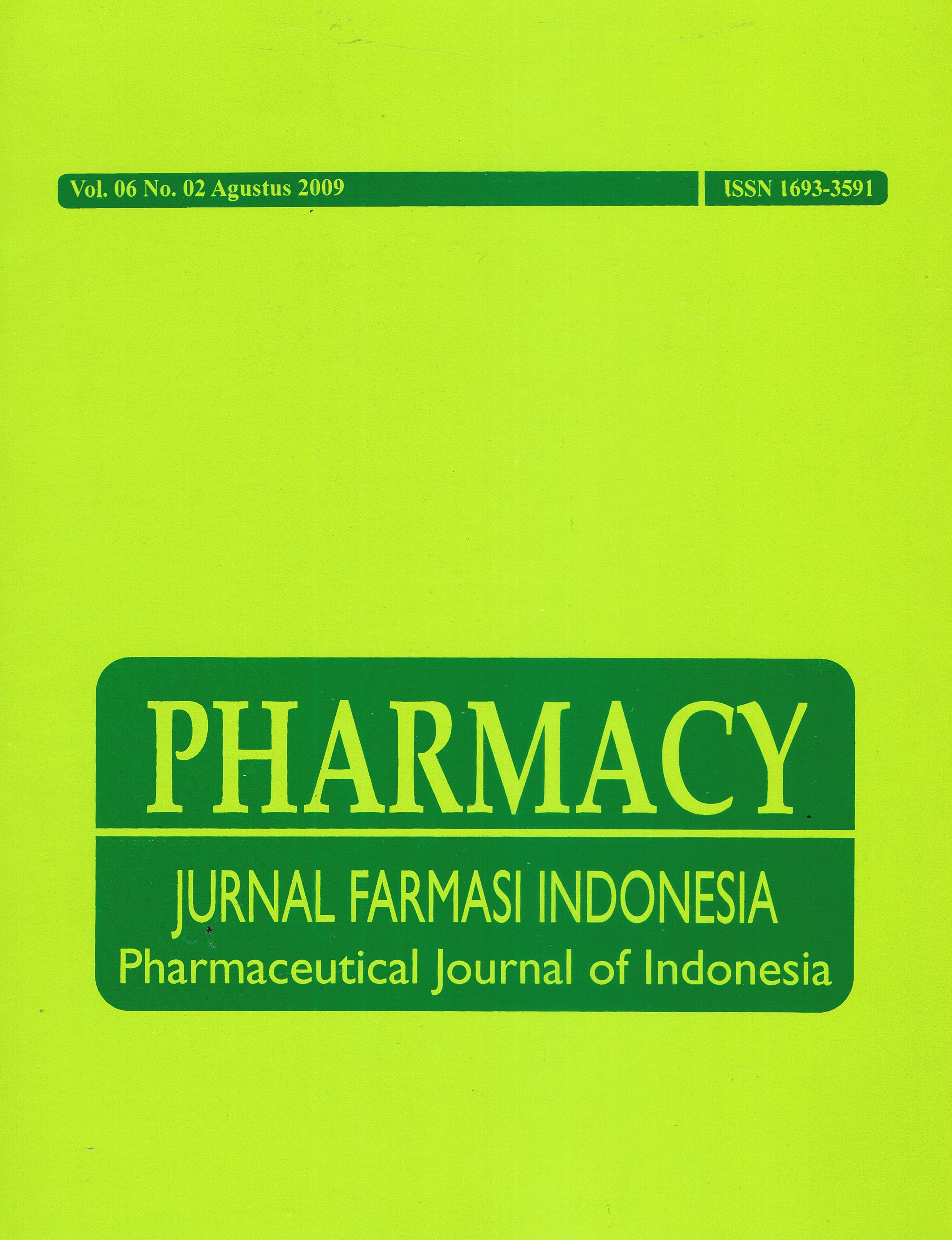EFEK HAIR TONIC BUAH MENGKUDU (Morinda citrifolia L) DAN UJI FITOKIMIANYA
DOI:
https://doi.org/10.30595/pji.v6i2.417Abstract
ABSTRAK Penelitian ini bertujuan untuk membuktikan bahwa buah mengkudu dalam bentuk ekstrak soxhletasi dapat mempercepat pertumbuhan rambut kelinci jantan. Kandungan buah mengkudu yang diduga mempunyai efek merangsang pertumbuhan rambut adalah alkaloid, saponin dan flavonoid. ekstrak dibuat dengan cara soxhletasi serbuk buah mengkudu menggunakan pelarut etanol 96% kemudian dipekatkan dengan penangas air, selanjutnya digunakan untuk uji pertumbuhan rambut kelinci jantan. Punggung kelinci dicukur persegi dengan sisi 2 cm. Kotak 1 diolesi etanol 96% sebagai kontrol negatif, kotak 2 diolesi ekstrak soxhletasi buah mengkudu konsentrasi 12,5 %, kotak 3 diolesi ekstrak soxhletasi buah mengkudu konsentrasi 25 %, kotak 4 diolesi hair tonic kina sebagai kontrol positif. Pengukuran pertumbuhan rambut dilakukan setiap 3 hari sekali selama 18 hari. Data pertumbuhan rambut rata-rata perhari yang diperoleh kemudian dianalisis dengan anava yang dilanjutkan dengan uji tukey dengan taraf kepercayaan 95 %. Hasil penelitian menunjukkan bahwa ekstrak soxhletasi buah mengkudu dapat mempercepat pertumbuhan rambut kelinci jantan. Kata kunci : Buah mengkudu, ekstrak soxhletasi, pertumbuhan rambut, kelinci jantan ABSTRACT The aim of this study is to prove whether ethanolic extract of Morinda can increase rabbit hair growth. The secondary metabolites of Morinda which stimulate rabbit hair growth are probably alkaloid, saponin and flavonoid. The extract was made by soxhletation of Morinda used ethanol 96 % as solvent, then it was thickened by water bath. The rabbit back was shaved into 2 cm square box. The first area treated ethanol 96 % as negative control, the second area treated with 12,5 % ethanol extract of Morinda, the third area treated with 25 % ethanol extract of Morinda, the fourth area treated with kina hair tonic as positive control. The measurement of hair growth was done every 3 days for 18 days. The daily average of hair growth was analyzed with anova and continued with Tukey test at 95 % significancy level. The result showed that ethanol extract of Morinda can increase growth of rabbit’s hair. Key words: Morinda, soxhletation extract, hair growth, rabbit.References
www.hanyawanita.com, 2007, Saat Rambut Merindukan Oase yang Meremajakan, Desember 2007.
Palupi, L., 1994, Pengaruh Sari Alkohol Daun Ageratum conyzoides L. Terhadap Pertumbuhan Rambut Kelinci Jantan dan Skrining Fitokimianya, Skripsi, Fakultas Farmasi, UGM, Yogyakarta, 27, 36, 41, 62.
Pancasari, N., 2001, Pengaruh Sari Etanol Daun Murbei (Morus australis Poir.) Terhadap Pertumbuhan Rambut Kelinci Jantan dan Skrining Fitokimianya, Skripsi, Fakultas Farmasi, UGM, Yogyakarta, 41, 49.
Sariasih, A., 1996, Uji Pertumbuahn Rambut dan Pengawasan Mutu Sediaan Hair Tonic dengan Daun Waru (Hibiscus Tiliaceus), Skripsi, Fakultas Farmasi, UGM, Yogyakarta, 77.
Voight, R., 1994, Buku Pelajaran Teknologi Farmasi, Diterjemahkan oleh Soendani Noerono, UGM Press, Yogyakarta, 563, 570, 572-573.
Wasitaatmadja, S.M., 1997, Penuntun Ilmu Kosmetik Medik, UI Press, Jakarta, 7-8, 203-205, 207, 209-210.
Downloads
Published
How to Cite
Issue
Section
License
Authors who publish with this journal agree to the following terms:
- Authors retain copyright and grant the journal right of first publication with the work simultaneously licensed under a Creative Commons Attribution 4.0 International License that allows others to share the work with an acknowledgement of the work's authorship and initial publication in this journal.
- Authors are able to enter into separate, additional contractual arrangements for the non-exclusive distribution of the journal's published version of the work (e.g., post it to an institutional repository or publish it in a book), with an acknowledgement of its initial publication in this journal.
- Authors are permitted and encouraged to post their work online (e.g., in institutional repositories or on their website) prior to and during the submission process, as it can lead to productive exchanges, as well as earlier and greater citation of published work (See The Effect of Open Access).






